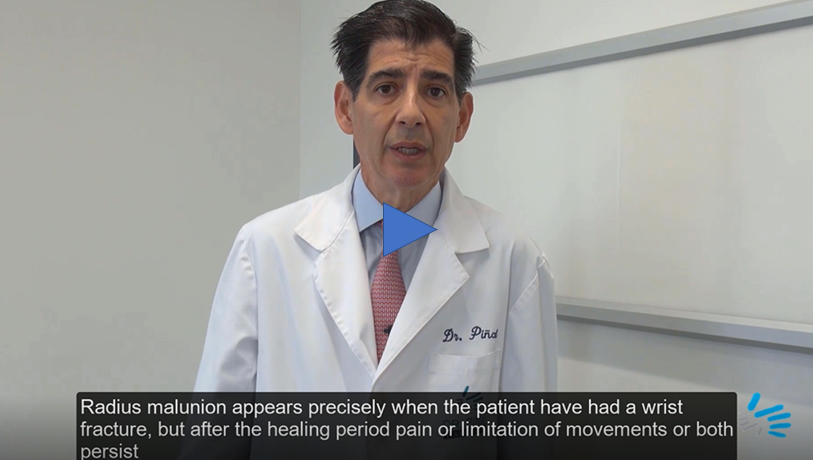Vous pouvez lire ci-après une traduction en anglais de ce contenu réalisée par un traducteur humain. Vous pouvez aussi accéder à l’original en espagnol en cliquant sur le drapeau correspondant à l’angle supérieur à droite. Ce lien vous permettra d’accéder à une version de traduction automatique de Google en français: https://bit.ly/3sKcaQJ
The radius is a bone located on the outside of the forearm, parallel to the ulna, which forms the joint complex of the wrist together with it and the carpal bone group. Its functions include facilitating flexion-extension and pronation-supination movements of the hand (a turn that allows us to position the back and palm up or down).
Precisely, its location and functions make the radius a bone prone to fracture, especially in falls (named Colles fractures). When these mentioned fractures don’t heal, that is, they dont’t weld properly, the so-called radio malunions appear, whose characteristics and consequences are the focus of this new blog entry by Dr Piñal.
The Spanish surgeon points out the persistence of pain and functional limitations, after the healing period of a wrist fracture, as symptoms of the existence of a radius malunion, in many cases in patients already operated on at least one occasion.
Piñal raises the need to intervene in this type of cases as soon as possible, especially when we talk about fractures that occur within the joint (intra-articular), which cause the appearance of articular steps-off. These steps-off are, in essence, differences in level between the contact points of two bones that should be aligned, and that cause, in addition to pain, bone wear that can irreversibly damage the joint, leading, for example, to early osteoarthritis.
In turn, Dr Piñal analyzes in the video, through the presentation of several case studies, the role of arthroscopy in the approach to intra-articular and extra-articular radius malunions (in the bone stalk or diaphysis); in addition to techniques such as osteotomy, in which the bone is cut and the original fracture is recreated, after what its fragments are placed in a correct position.
On the other hand, he underscores again the possible irreversibility of joint damage if the malunion causes erosion of the cartilage (which acts as a sliding surface between the bones). In this profile of cases, the possibility of corrective actions disappears and salvage surgery comes along, through procedures such as resection arthroplasty or partial wrist arthrodesis, which implies a certain loss of mobility, but with the benefit of functional improvement and pain relief. The key, he points out during his explanation, is to achieve maximum movement without pain.
Finally, the Spanish surgeon details the characteristics of the postoperative period in the surgical correction of this type of pictures, focusing on immediate mobilization without a cast and the absence of pain, which open the door to a new and positive situation for patients with bad previous experiences.
Born in Santander, northern Spain, in 1960, Dr Francisco del Piñal is considered one of the world’s best hand surgeons. His contributions in fields like microsurgical toe to hand transfer or arthroscopic surgery techniques on wrist fractures are endorsed and used internationally.
Among other milestones in his career, it is worth mentioning the setting of the principles of surgery in the acute catastrophic hand, as well as his leading role in the development of wrist arthroscopy, through procedures such as dry arthroscopy.
Currently, Francisco del Piñal leads Piñal y Asociados clinics in Madrid and Santander and the unit of hand and microsurgery at Hospital La Milagrosa in Madrid.
Contenu associé :
 es
es en
en fr
fr it
it ru
ru zh-hans
zh-hans
